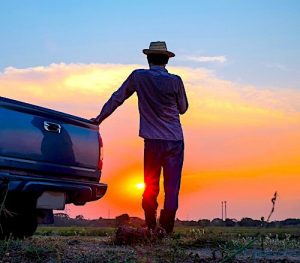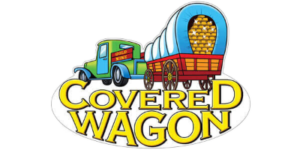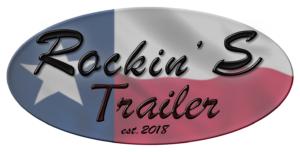HOTSHOT TRUCKING 101

So you want to get into the hot shot trucking business?
We’ve found that most people looking to get into hotshot trucking have been told conflicting information about what they’ll need to start. Here’s a rundown of what you’ll need to know. If we left something out or you have further questions, you can call us at 931-433-6930 (ask for Bill or George).
Short answer: YES. Any vehicle combination over 26,001 pounds will require a class A CDL to operate. The GVWR (gross vehicle weight rating) is the combination of the truck’s GVWR, and the trailer’s GVWR. (For example: My truck has a GVWR of 13,000 pounds, my trailer has a GVWR of 24,000 pounds. Add those two, and you get 37,000 pounds, So I need a CDL.)
DE-RATING- You CAN de-rate the GVWR sticker on your trailer to stay under 26k if you DON’T have a CDL. For instance, “My truck is rated at 12,000lb GVWR and my trailer is rated at 25,000lb GVWR.” I can de-rate my trailer to 14,000lb GVWR. Now i have a combined GVWR of 26,000lb.
You can only de-rate a new (never registered) trailer. The trailer can not be “re-rated” once it has been de-rated.
More than likely, yes.
If your truck and trailer’s GVWR exceed 10,001 pounds (and doing business out of state), a USDOT number must be displayed on the sides of it. ( 2″ letters, must be visible from 50′ away) Also, since you will be running a GVWR more than likely 26,001 plus, you’ll need the DOT number.
You are a CDL driver, you must comply with all FMCSA standards. So, you’ll need to go do (and pass) a pee test, AND, you will be randomly selected by your consortium to take a test.
If you ever plan on working out of state, yes you must have a motor carrier number.
From the Texas state website:
IFTA is an agreement that provides for the consolidated reporting of motor fuels (i.e., Gasoline, Diesel Fuel, Liquefied Gas, Compressed Natural Gas, Liquefied Natural Gas) taxes for qualifying commercial motor vehicles traveling in more than one state or province of Canada. IFTA is not a separate tax or fee.
If you run out of state, you will need apportioned plates. Along with the MC# and IFTA tags.
For the most part you will need:
A $1 million dollar general liability policy for your company.
Cargo insurance
Depending on the customer, you may be required to have worker’s compensation insurance.
Also, they (your customer) might require you to have an umbrella liability policy. (additional coverage in case you, God forbid, FUBAR something.)
Speaking of “company” you will more than likely have to file for a EIN or Employer Identification Number (unless you are registered as a sole-proprietor company, then your SSN should suffice.) for your taxes.
You will be self-employed. SAVE AND OR MAKE COPIES OF ALL YOUR EXPENSE RECEIPTS!!!!
The tax man does not forgive, so you want to save and add up all of your fuel, food (while OTR) and maintenance expenses. That will help you out substantially.
9.A. What Length should I buy?
The most common hotshot trailer we sell is a 40′ flatdeck.
Why 40′?
Your trailer and truck cannot be longer than 65′ if you are pulling with a truck that has a bed on it. (You can remove the bed and add fenders to bypass this law)
A crew cab Ford superduty that we measured was 15’8″ from the GN ball to the front bumper. A 40′ GN trailer has 8’10” of GN riser.
15’8″+ 8’10″+ 40′ = 64’8″ Total length… So a 40′ is the most common size due to most people wanting as long of a trailer as they can legally pull.
Everyone’s needs are different and some guys will prefer a shorter trailer.
9.B. What type of Brakes?
“Which brakes should I run?” is the most frequently asked question around here. There are 2 options to consider. I’m gonna try to break down the different aspects of both electric drum and EOH disc brakes.
ELECTRIC DRUM BRAKES-
Pros:
1. Cheap. Electric drum brakes are the standard option on any flatdeck dual tandem trailer.
Cons:
2. Overheating. You really need to take your time setting your brake controller with electric drum brakes. Too little gain and they won’t stop, too much and they’ll get hot and never work again.
3. Expensive repairs. Once electric drum brakes have gotten hot, You’ll have to replace every component (drums, shoes, magnets, backing plates) and rewire the trailer to get them back working again. (In most cases)
The total cost of an electric brake rebuild on a dual tandem trailer is about 2000.00-2600.00. (the option for EOH disc brakes is usually about 1800.00)
4. Manually adjusting brakes. There’s an art to this since the backing plates tend to tighten up as you’re rolling. Set them loose then pull the trailer for about 100 miles (to let the shoes seat) then check them.
5.Less stopping power. Electric over hydraulic brakes don’t have the stopping power of EOH disc brakes. On flat ground ,with most loads, they work fine. If you’re gonna be carrying heavy loads or hauling up and down a moun, you’ll be more satisfied with EOH disc brakes.
ELECTRIC OVER HYDRAULIC DISC BRAKES (EOH DISC)-
Pros:
1. Stopping power. People who have EOH disc brakes swear by them. They stop. Period. If you are hauling heavy loads or hauling up and down Monteagle mountain, you need EOH brakes.
2. Cheap repairs. EOH disc brake pads are 99.00 a set and easy to install/replace yourself. Rotors are about 170.00 each.
3. Self adjusting. They self adjust. Self explanatory.
Cons:
1. More expensive initially. EOH disc will run you about 1800.00 up front, when you buy/order a trailer. (An electric drum rebuild will cost you more than 1800.00.)
2. You may need to buy a brake controller. If you have a truck older than a 2015 model and you’ve never had EOH disc brakes, you are probably gonna have to buy a $180.00 brake controller. Simple install. Then you’re done.
Hope this helps.
You can call 931-433-6930 or email us at wholesaletrailer@hotmail.com if you have any questions.



